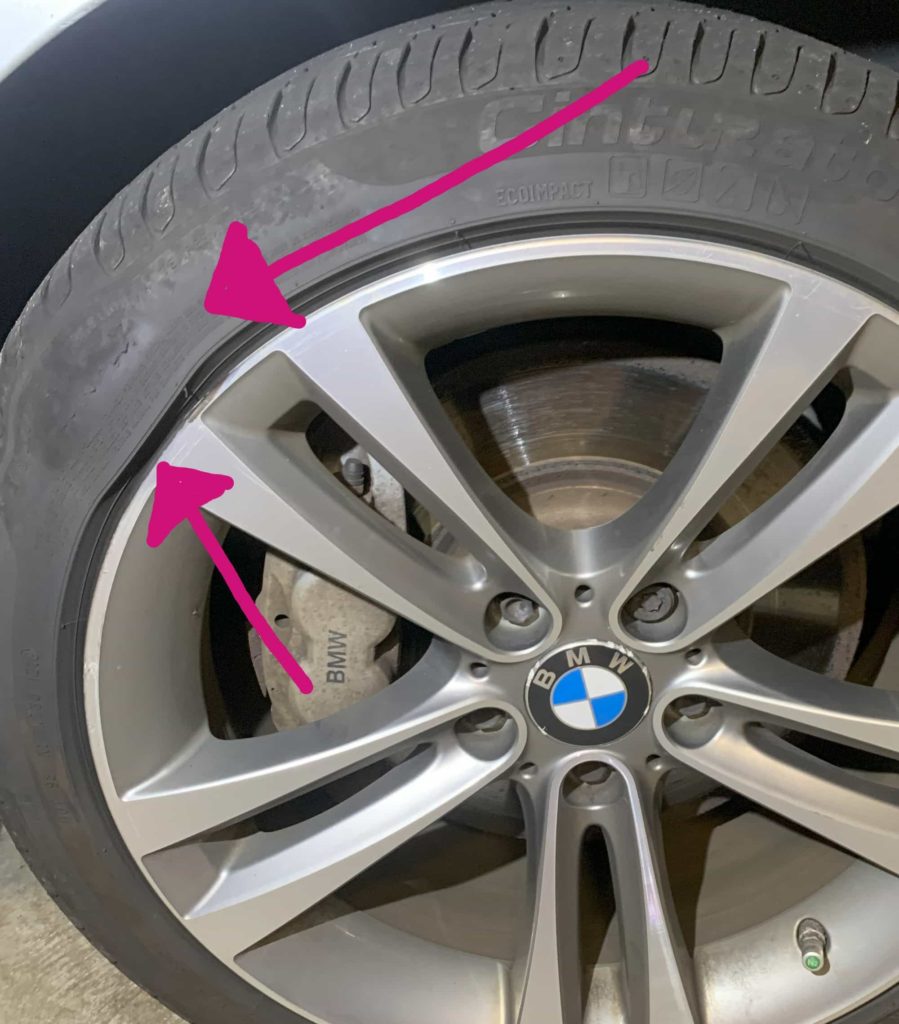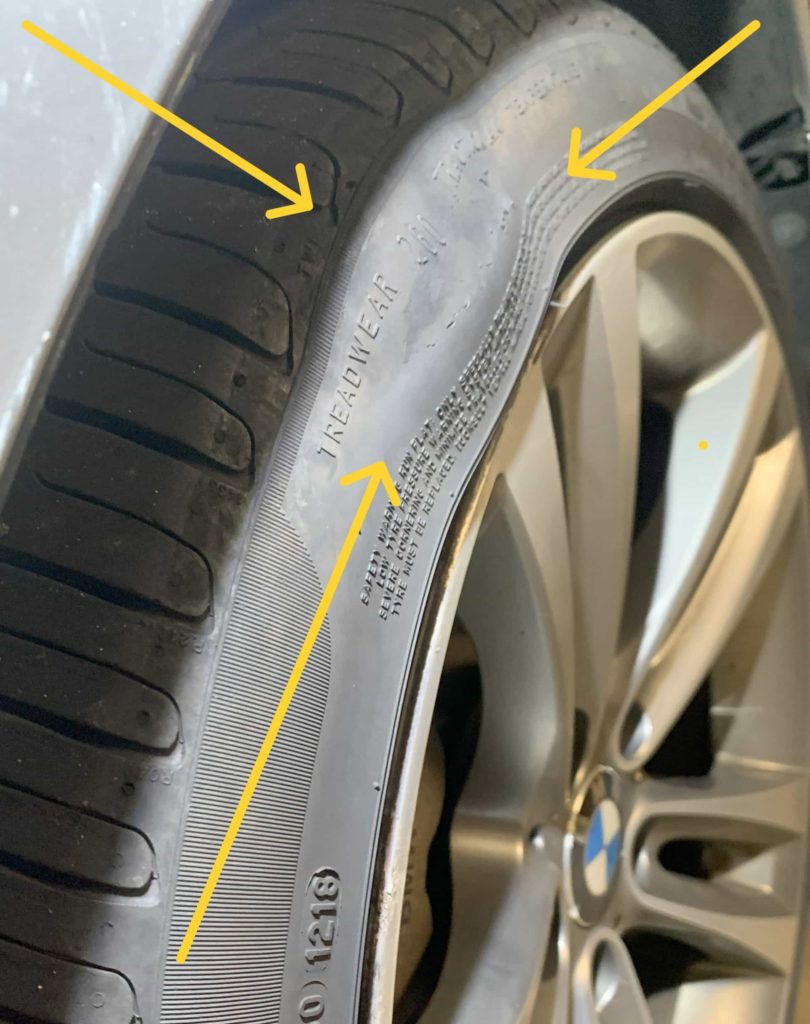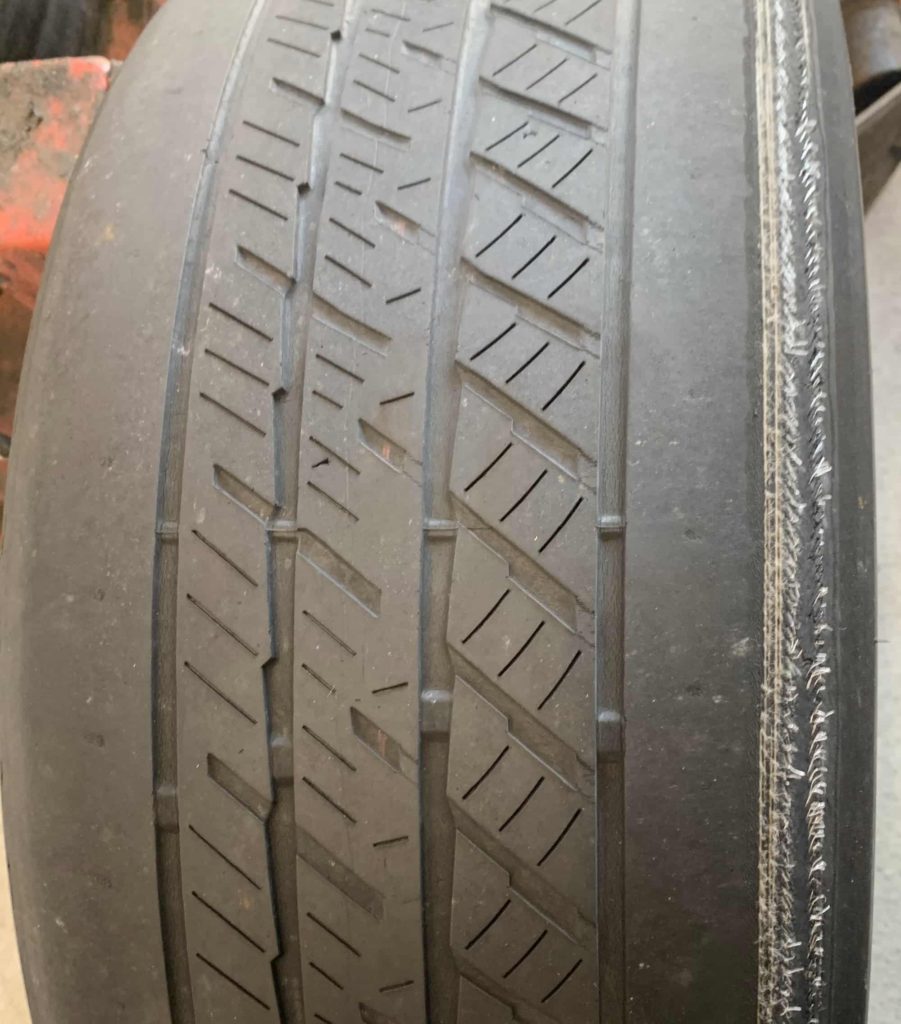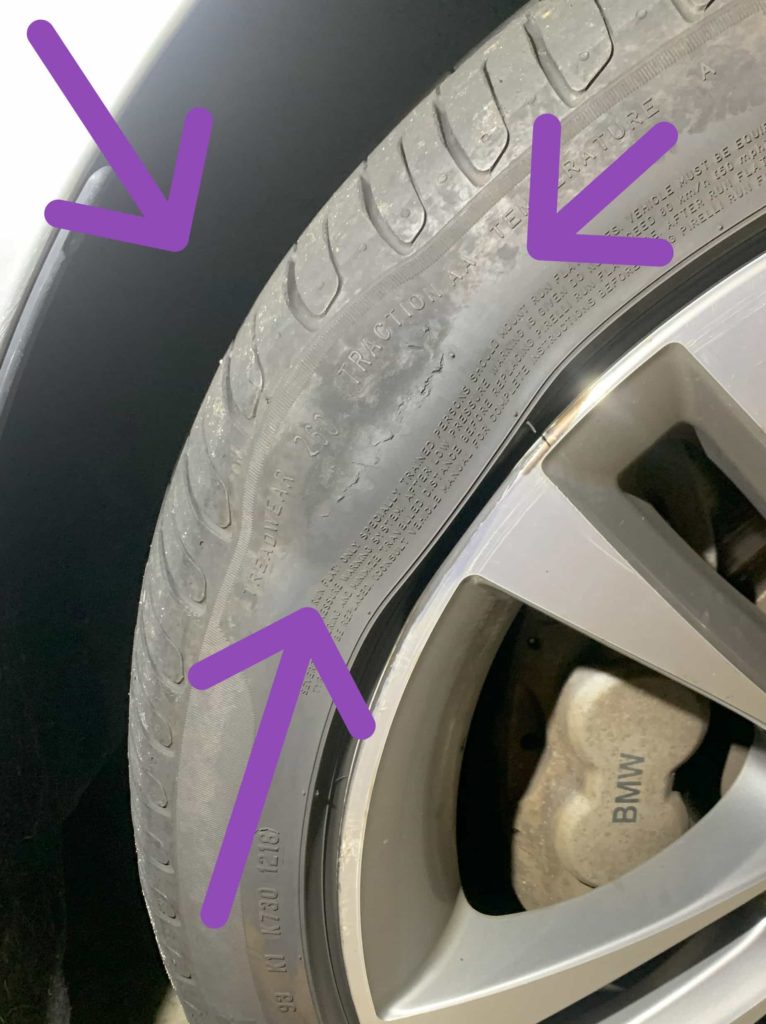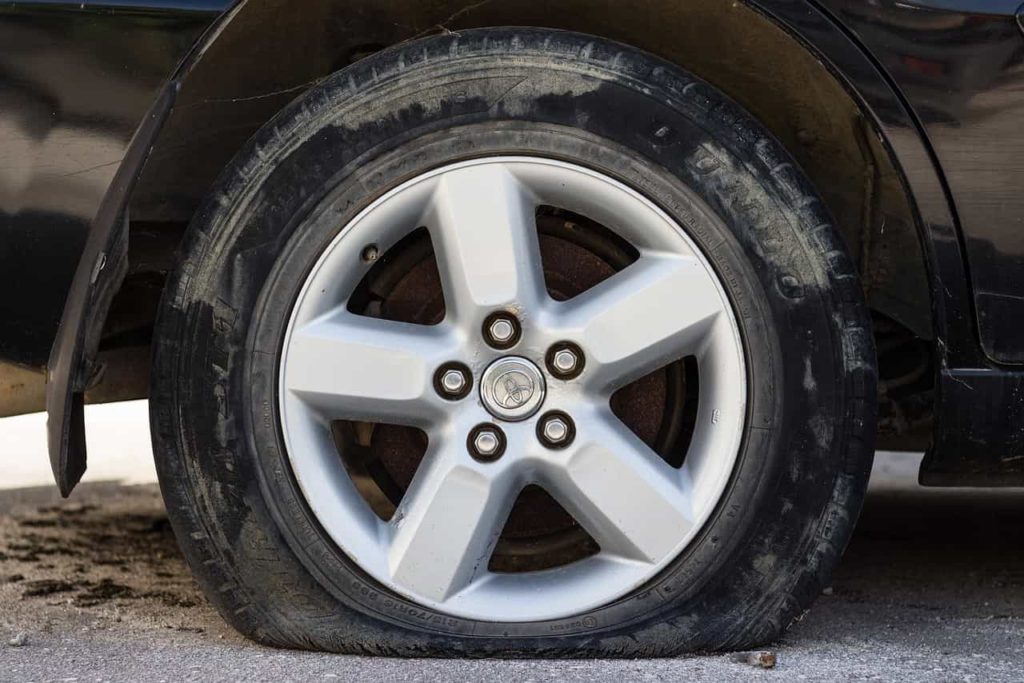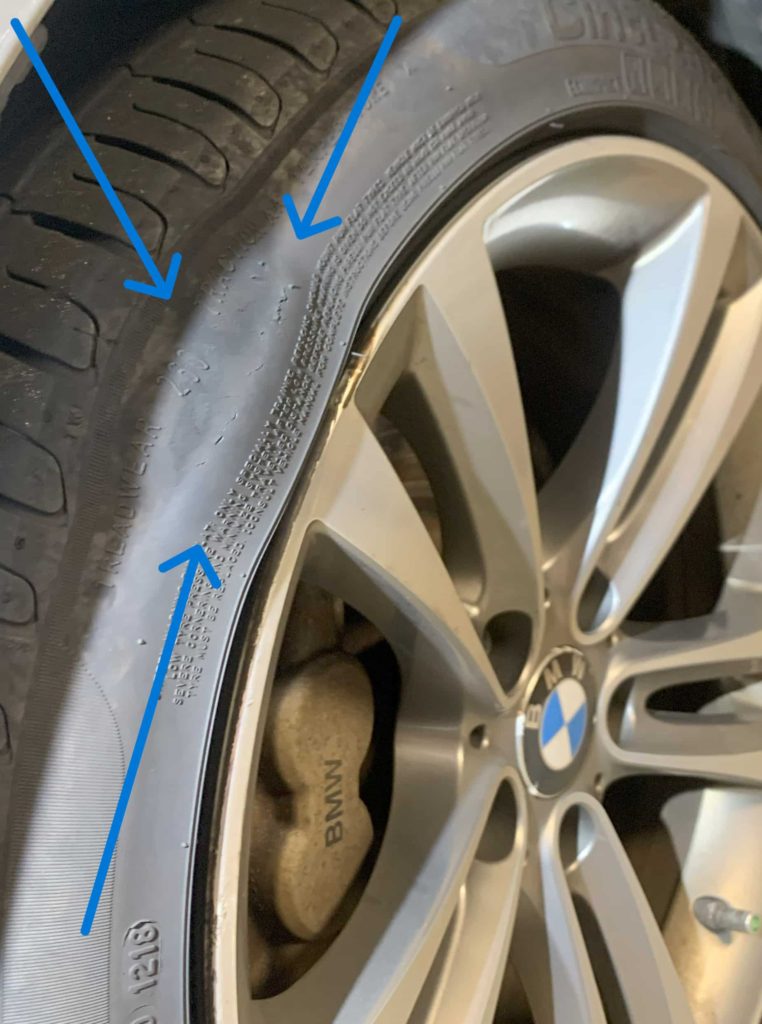Tire Bubbles
Understanding the intricate workings of a tire is essential for every vehicle owner. One particular issue that often arises and demands attention is the occurrence of tire bubbles.
A tire bubble can be likened to a small time bomb ticking away waiting to cause trouble at the most inconvenient moment. Understanding what a tire bubble is, how it forms, and its potential consequences is paramount for maintaining road safety and extending the lifespan of your tires.
What is a tire Bubble?
A tire bubble can be defined as an irregular bulge or protrusion on the surface of a tire caused by internal air pressure pushing against weakened areas within its structure. It typically appears as an abnormal blister-like formation on either the sidewall or tread surface of the tire. This bulging occurs due to structural weaknesses or damage within the layers comprising the tire’s construction.
Understanding Tire Bubbles
The significance of understanding what a tire bubble entails cannot be overstated. Recognizing and addressing these abnormalities promptly can prevent potential catastrophic incidents such as sudden blowouts while driving at high speeds or compromised handling capabilities that may lead to accidents. Being knowledgeable about this issue empowers motorists to take proactive measures in identifying and preventing tire bubbles from occurring on their tires.
Understanding Tire Construction
Layers of a Tire
Tires are not just simple rubber rings that provide a cushion between your vehicle and the road. They are actually intricately designed structures composed of several layers that work together to ensure optimal performance and safety.
Understanding these layers is crucial to comprehend the formation and potential issues of a tire bubble. From the outermost layer to the innermost, tires consist of the outer tread layer, steel belts and fabric layers, as well as the inner liner and sidewall layers.
Outer Tread Layer
The outer tread layer is perhaps the most visible part of a tire. It is responsible for providing traction on various road surfaces and conditions to ensure stability while cornering, braking, or accelerating.
This layer comprises a specifically formulated rubber compound with intricate tread patterns designed to optimize grip and effectively disperse water. The depth and design of the tread pattern play a significant role in maintaining overall tire performance.
Steel Belts and Fabric Layers
Beneath the outer tread layer lies steel belts and fabric layers that contribute to tire strength, durability, and stability. Steel belts are made up of thin steel cords molded into a mesh-like pattern placed around the circumference of the tire. These belts enhance resistance against punctures while also enabling better handling characteristics through their ability to maintain tire shape under high-speed driving conditions.
Fabric layers (typically made from polyester or nylon) are positioned between each steel belt within the tire’s construction. These layers add strength while promoting flexibility necessary for proper sidewall movement during driving maneuvers such as cornering or sudden changes in direction.
Inner Liner and Sidewall Layers
Moving inward within the structure of a tire brings us to its inner liner, which acts as an impermeable barrier preventing air from escaping through microscopic pores in rubber compounds used elsewhere in the tire. The inner liner is vital for maintaining proper tire inflation, minimizing air pressure loss, and ensuring optimal driving performance.
Adjacent to the inner liner are the sidewall layers which provide structural integrity and protection against external forces. These layers are composed of plies that may consist of fabric or steel cords diagonally positioned at an angle known as the “bias.” This construction method aids in transmitting vehicle loads evenly throughout the tire, contributing to stability and load-bearing capacity.
Understanding tire construction and the various layers involved provides a solid foundation for comprehending how a tire bubble can form and affect overall tire performance. By delving into these intricate details we can gain insights into the complexities of our vehicle’s most critical point of contact with the road.
Causes of Tire Bubbles
Impact Damage from Potholes or Curbs
One of the primary causes of tire bubbles is impact damage resulting from encounters with potholes or curbs. When a tire strikes a pothole for instance, the force is transmitted through the tire’s structure causing it to deform momentarily. This sudden deformation can result in weak spots or separations within the layers of the tire that lead to the formation of a bubble.
Similarly, hitting a curb with significant force can cause damage to the sidewall or tread area, weakening the tire and potentially creating a bubble over time. It is essential to note that even seemingly small impacts can have long-term consequences for tire integrity.
The layers within a tire are designed to withstand normal driving conditions but may not be able to withstand sudden shocks caused by severe road irregularities. This is why it’s crucial for drivers to exercise caution and avoid hazards on the road whenever possible. (We are not advocating to swerve onto the other side of the road to avoid a pothole, but to slow down and exercise caution when possible.)
Manufacturing Defects in Tire Construction
Despite stringent quality control measures in place in modern manufacturing processes, occasional defects may still occur during the production of tires. These defects can manifest as weaknesses within specific sections or layers of a tire’s construction that increase the likelihood of bubble formation.
Manufacturing defects can include improper bonding between layers, inconsistent application of adhesives between plies, or variations in rubber compound distribution. These imperfections compromise structural integrity and make certain areas more susceptible to bulging under pressure.
As consumers cannot easily identify these defects when purchasing new tires, manufacturers are responsible for ensuring their products meet rigorous specifications before they reach end-users. However, it’s always wise to inspect your newly purchased tires for any visible issues such as irregularities before being installed onto wheels.
Overinflation or Underinflation of Tires
Maintaining proper tire inflation levels is paramount to ensure optimal performance and longevity. Both overinflation and underinflation can contribute to the development of tire bubbles, albeit through different mechanisms.
When a tire is overinflated, excessive internal pressure causes the tire to become hard and rigid. As a result the sidewalls are pushed outward and increase stress on specific areas. Over time this excess strain weakens the affected regions, leading to bubble formation.
On the other hand underinflated tires experience increased flexing of their sidewalls while in motion. This frequent flexing generates excess heat within the tire’s structure and can lead to localized weak spots or separations between layers. Subsequently, these weak areas may give rise to a bubble.
To avoid such issues it’s crucial for vehicle owners to adhere to the recommended pressure levels specified by the tire manufacturer. Regularly checking and adjusting tire pressure not only improves fuel efficiency but also helps prevent potentially hazardous conditions associated with tire bubbles.
Identifiying a Tire Bubble
Visual Signs on the Tire's Surface
When inspecting your tires one of the most apparent visual signs of a tire bubble is a bulging or protruding area on the sidewall or tread. This bulge may vary in size and can range from being slightly raised to becoming quite prominent.
It usually appears as if a small localized section of the tire is pushing outward, forming an irregular bump. The bulge may be more noticeable when the tire is inflated so it’s recommended to check your tires when they are properly inflated.
Irregularities in the Tire's Shape or Texture
Another visual clue that indicates a potential tire bubble is any irregularity in the tire’s shape or texture. Run your hand along the surface of each tire to try and feel for any abnormalities such as uneven areas or dips.
A healthy undamaged tire should have a smooth and consistent texture throughout its circumference. If you encounter any rough patches or inconsistencies while running your hand over the tread and sidewalls it could be an indication of a hidden bubble formation beneath.
Tire Pressure Monitoring System Alerts
All modern vehicles are equipped with Tire Pressure Monitoring Systems (TPMS) which alert drivers to potential issues with their tires. These systems use sensors to monitor air pressure within each individual tire.
When a significant change in pressure occurs due to a developing bubble the TPMS will trigger an alert on the dashboard display or through audible signals. Pay close attention to these warnings and take necessary action promptly by inspecting your tires thoroughly.
Tire Vibration or Steering Wheel Wobble
While driving pay attention to any unusual sensations such as vibrations felt through the steering wheel or overall wobbling of the vehicle. A growing tire bubble can cause these disturbances due to the imbalance it creates in the tire’s structure.
If you notice an uncharacteristic vibration or wobbling particularly at higher speeds or during certain driving maneuvers, it is imperative to investigate further. These symptoms may not always point directly to a tire bubble but they warrant a closer inspection of your tires to ensure their integrity.
Identifying a tire bubble requires careful observation and attention to both visual cues and physical sensations while driving. By being vigilant and proactive in evaluating your tires for any signs of damage you can prevent potential accidents or costly repairs caused by a deteriorating tire bubble.
Tire Bubble Risks and Consequences
Potential for Sudden Blowouts at High Speeds
A tire bubble poses a significant risk of sudden blowouts especially when driving at high speeds (over 65mph). As the air-filled cavity within the tire expands due to the bubble it weakens the structural integrity of the tire. This increased vulnerability can lead to a catastrophic failure of the tire and cause it to burst suddenly.
The consequences of a blowout while driving can be dire, with loss of control over the vehicle being a major concern. A driver may experience a sudden jolt or swerve as the tire gives way, potentially leading to accidents and serious injuries.
Impaired Handling and Decreased Traction
Tire bubbles also severely impair the handling capabilities of a vehicle. When there is an irregularity in tire shape due to a bubble it disrupts the smooth rotation and distribution of forces between tires, affecting overall stability and control. The presence of a bubble causes an imbalance in weight distribution, leading to uneven contact between the tire and road surface.
Consequently, steering responsiveness becomes compromised making it more challenging for drivers to maneuver their vehicles accurately. Bubbles create an uneven tread pattern that reduces traction with the road surface; this results in longer stopping distances and decreased grip during cornering or emergency maneuvers.
Damage to Other Parts of the Vehicle
Apart from endangering your safety on the road, tire bubbles can cause collateral damage to other crucial parts of your vehicle’s suspension system. As tires are designed to absorb road impacts and vibrations through their rubber compounds and internal layers, when these structures are compromised by bubbles, excessive stress is exerted on surrounding components such as shock absorbers or struts. Over time this continuous strain could lead to premature wear or even failure of suspension components.
The sudden jolts and vibrations caused by driving on a tire with a bubble may also impact other parts of the vehicle’s chassis, including wheel bearings and tie rods. Therefore prompt detection and resolution of tire bubbles are essential to prevent costly repairs and ensure the overall health of a vehicle’s mechanical systems.
With these risks and consequences in mind it becomes evident that tire bubbles should never be overlooked or underestimated. Addressing any signs of a bubble can save lives, avoid accidents, and prevent significant damage to both the vehicle and its occupants.
Preventing Tire Bubbles
Maintaining Proper Tire Inflation Levels
Maintaining optimal tire inflation levels is crucial in preventing tire bubbles. Each tire has a recommended pressure range specified by the manufacturer typically measured in pounds per square inch (PSI).
To ensure proper inflation regularly check your tires with a reliable pressure gauge and adjust them according to the manufacturer’s guidelines. It is recommended to do this at least once a month or before embarking on long journeys.
Inspecting Tires for Signs of Damage
Vigilant inspection of your tires is another essential aspect of preventing tire bubbles. Take a close look at your tires periodically examining both the tread surface and sidewalls for any signs of damage or irregularities. Look for bulging or protruding areas that may indicate an underlying bubble formation.
Pay attention to any cuts, punctures, or abrasions that could weaken the tire’s integrity and potentially lead to bubble development over time. If you spot any abnormalities during inspection it is important to have your tires examined by a professional as soon as possible.
Avoiding Rough Road Conditions
While it may not always be feasible to avoid rough road conditions entirely, making an effort to steer clear from pothole-ridden streets and uneven surfaces can significantly reduce the risk of tire bubbles. Potholes are notorious culprits for causing impact damage that can lead to bubbles forming within tires.
When encountering unavoidable road hazards such as large potholes or curbs, slow down and try to navigate around them whenever it is safe to do so. By driving cautiously and avoiding rough road conditions whenever possible you can minimize the likelihood of tire damage and the subsequent formation of tire bubbles.
Dealing with a Tire Bubble
Consulting a Mechanic
When confronted with the presence of a tire bubble it is imperative to seek the expertise of a professional mechanic or tire specialist for an accurate assessment.
They will carefully inspect the affected area taking into consideration factors such as size, location, and severity of the bubble. Most mechanics will always advise on tire replacement.
Replacing the Damaged Tire
Once it has been established that your tire has sustained irreparable damage from a bubble, replacing it becomes vital for your safety on the road. Whenever replacing a tire, always match it to the existing tires on the vehicle.
Conclusion
In conclusion, understanding and addressing tire bubbles should be a key priority for any driver. The interplay between tire construction, driving conditions, inflation levels, and even manufacturing quality all contribute to these ticking time bombs on our wheels. Regular inspection, prompt professional intervention, and adhering to maintenance best practices are your best defense against the potentially dangerous and costly aftermath of a tire bubble. It’s all about being informed, prepared, and proactive, turning this often overlooked aspect of vehicle care into a routine that can ensure your safety and extend the lifespan of your tires. Remember, it’s not just about avoiding the bumps in the road but also keeping an eye on the ones that might just be hiding in plain sight on your own tires.
